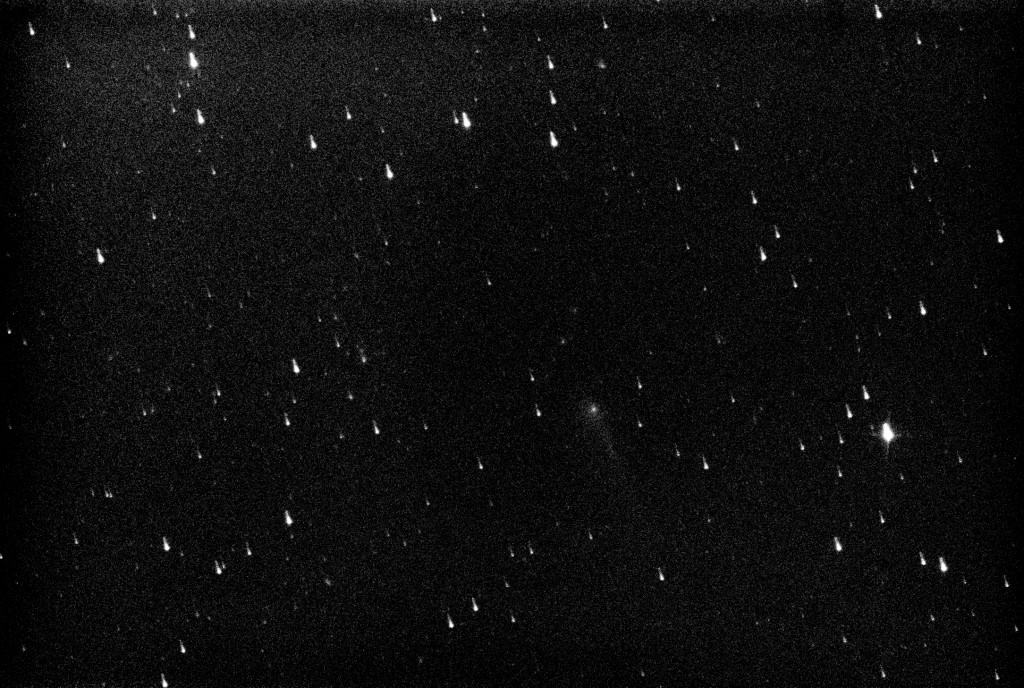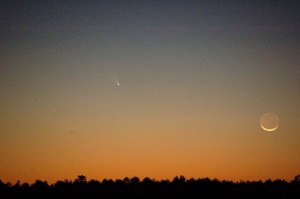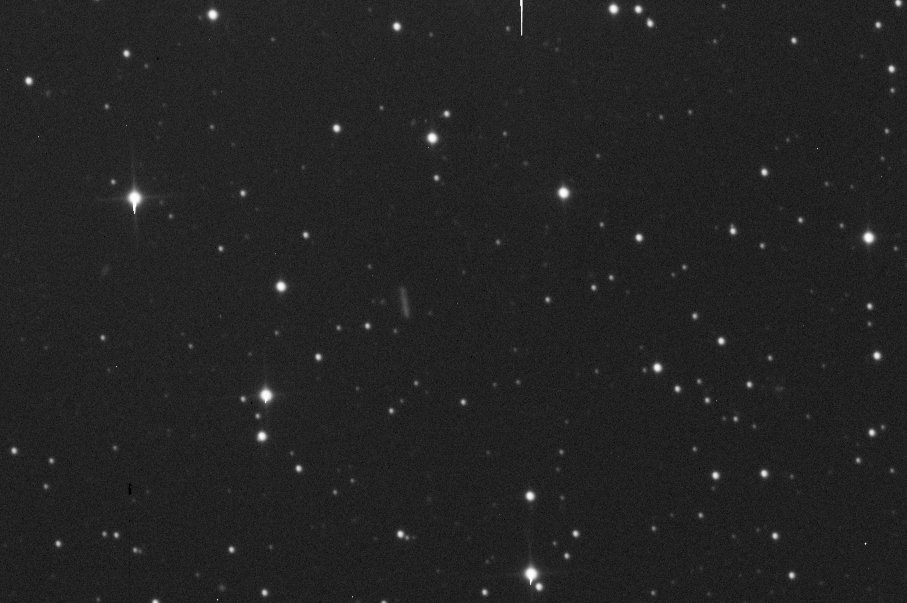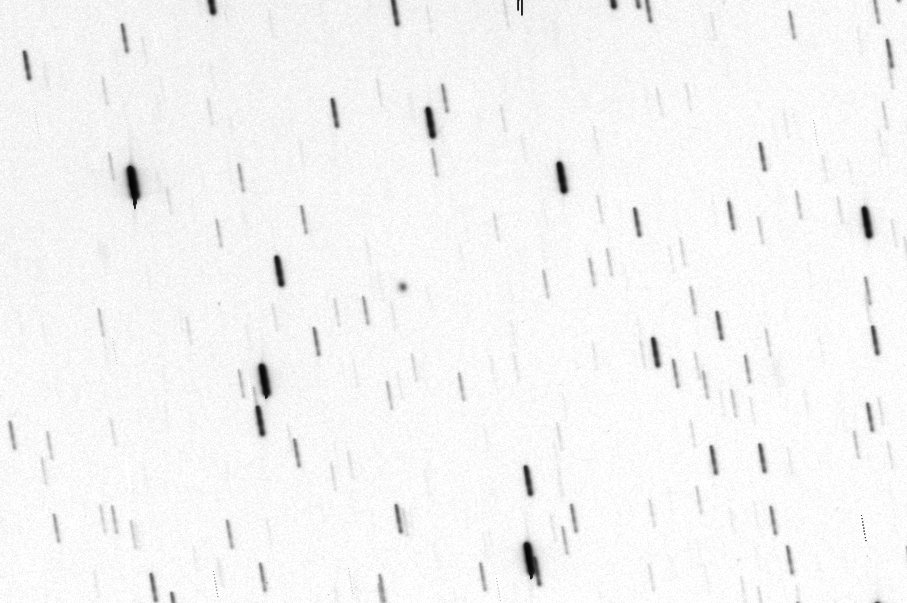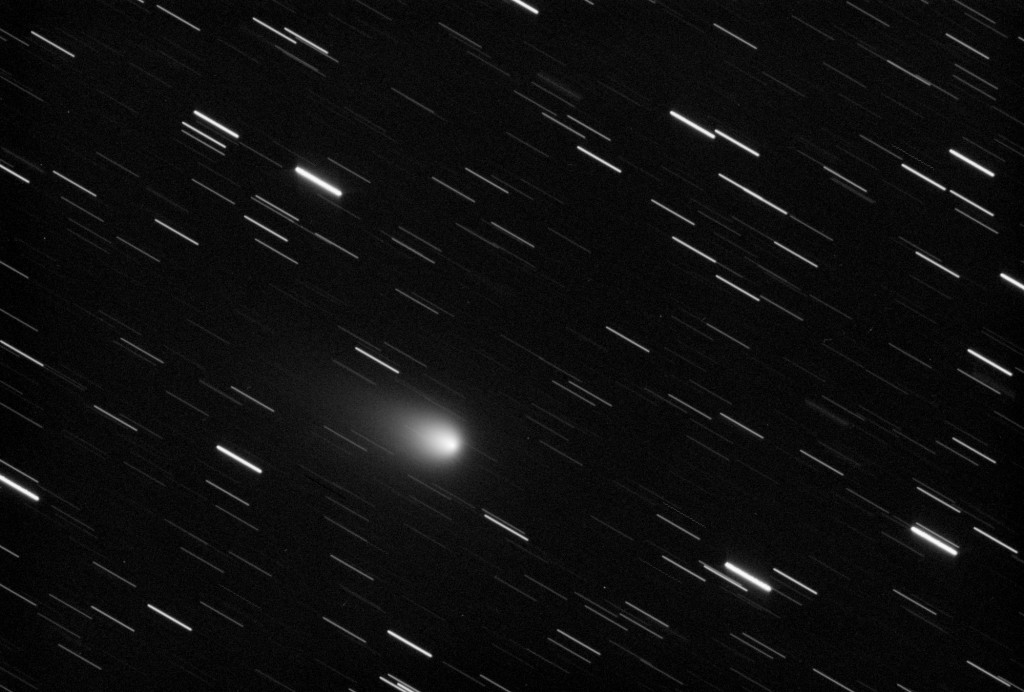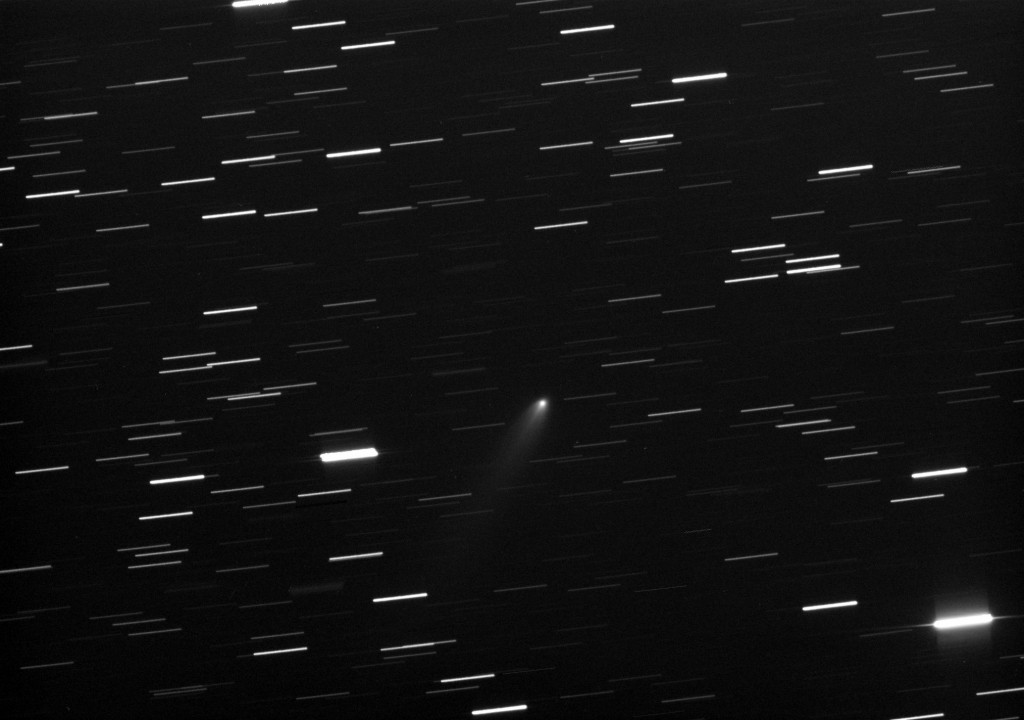Comet 67P/Churyumov-Gerasimenko holds the distinction of being the first comet to be orbited by a spacecraft as well as the first to have a probe soft land on its surface. After a 10 year trip the Rosetta spacecraft entered orbit and on November 12, 2014 dropped its lander (Philae) on to the nucleus. The primary purpose of the mission was to characterize the comet and its behaviour during its perihelion passage on 13 August 2015. The comet, with its attendants, is now heading back out into deep space and will return to visit the inner solar system in 2023.
This image is a stack of fifteen 120 second exposures with the images registered to the comet. The image is very noisy as the Moon was very close and there was some faint wispy clouds overhead.
FYI, the comet symbol on the chart is not an indicator of the tail orientation. Also, notice the obvious difference between the comet’s predicted position in the chart versus the actual position in the image stack.
